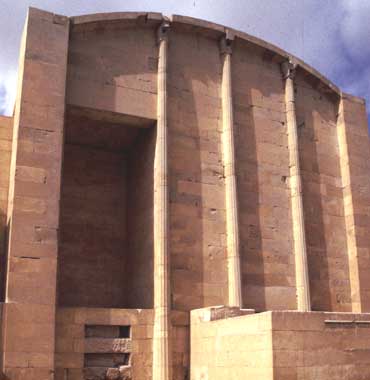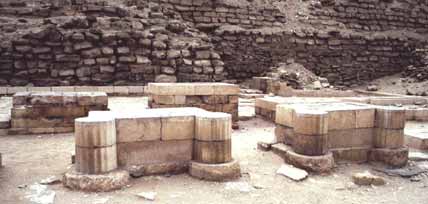|
Ancient
Egypt by Sjef Willockx |
||
|
The Step Pyramid complex of Djoser (3rd dynasty) at Saqqara presents us with an unprecedented explosion of new forms. Some of these made it into the fixed "canon" of ancient Egyptian architecture - and some didn't. Both reed columns and fluted columns apparantely failed the test.
These are pilasters in the form of fluted columns, (the
fluting is better visible in the larger file), crowned with a capital (with pendant leaves) that was not used later either.
That this was a period of experimentation is also
apparent in the use of these "half-columns". Half-columns are columns
that are supported on one side with a short adjoining wall. This feature
indicates that one did not yet fully trust the strength and stability of
stone as a building material. In the entire Step Pyramid complex, there
was actually
not one single free-standing column. Back to start Previous Next Thumbnails
|
|
|
|
|
All materials on this site are protected by copyright. All copyright by Sjef Willockx, unless otherwise indicated. |

